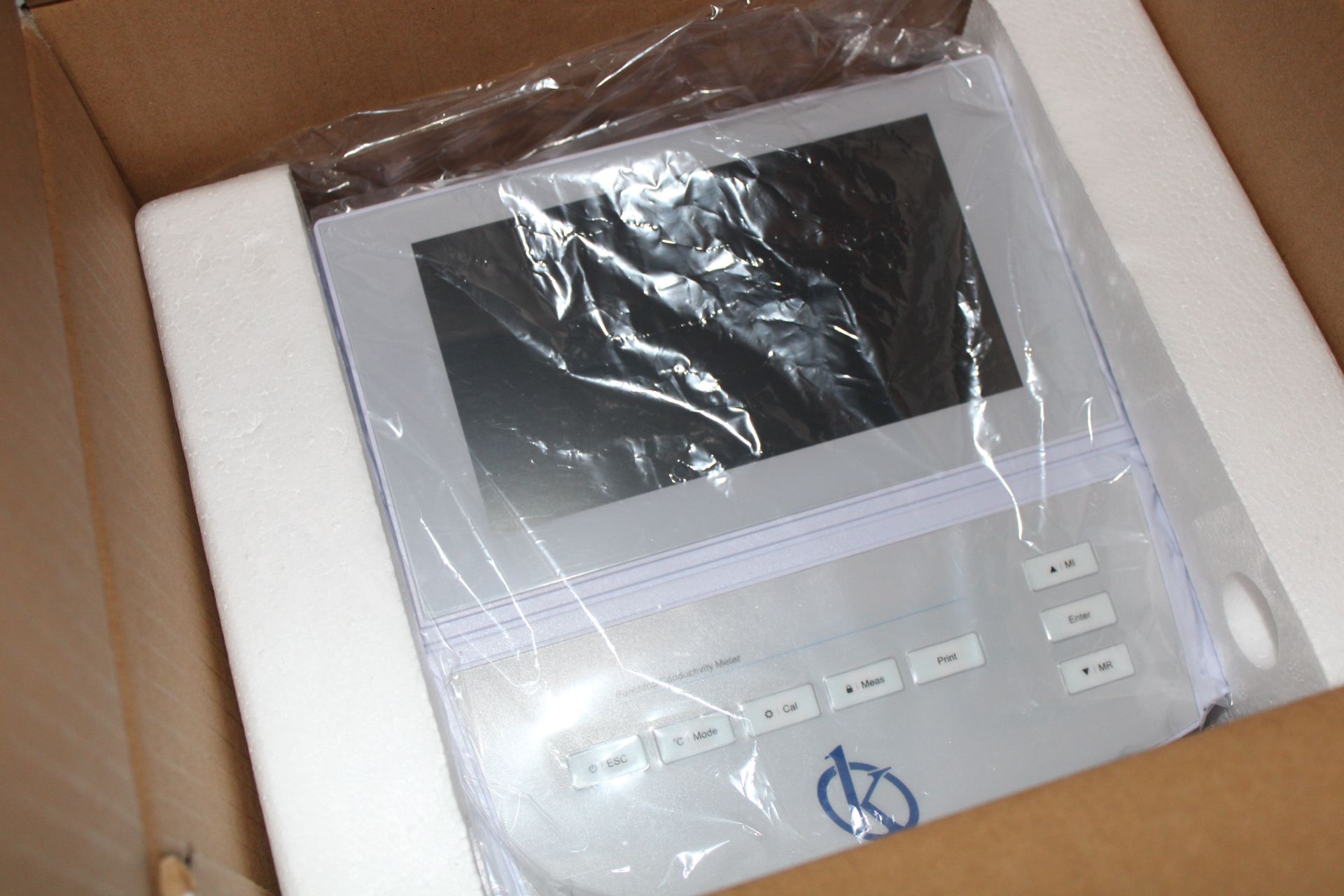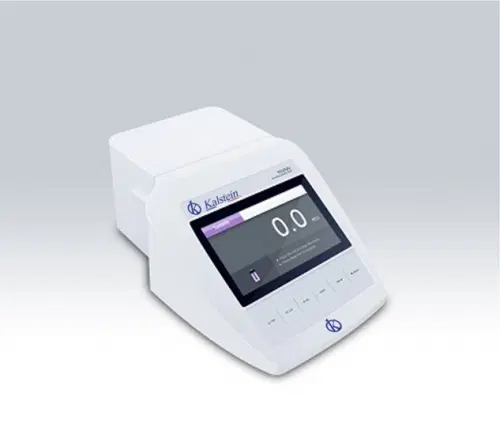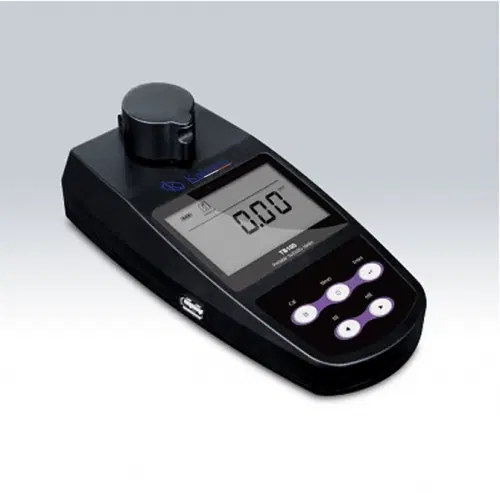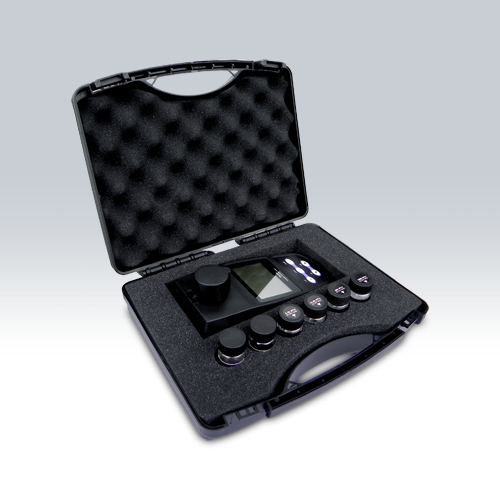Turbidity meter
A turbidity meter is a device that allows to evaluate how turbid a liquid is, i.e. it determines the turbidity. It does this through an optical analysis that allows it to measure the particles in suspension in a dissolved gas or liquid. It uses a light source and a light detector (a photocell) fixed at right angles to the original beam.
Turbidity is the measure of the opacity or haziness of a fluid. It is considered an essential analysis to determine the quality of water, because it is caused by particles of different sizes that generate an opaque appearance in the sample, and it will be higher when there is a higher proportion of undissolved solids in the liquid. Although it is important to keep in mind that turbidity is a measure of the opacity of a liquid, it is not a measure of actual particles.

Types of Turbidity Meters that a Laboratory may require

Benchtop turbidity meter YR01842
Menu that allows you to set the date and time, measurement mode, resolution, automatic power supply, etc...

Portable turbidity meter YR01841
Configuration menu allows you to configure the number of calibration points, resolution, date and time, etc...
Our best selling Turbidity Meter
- High-performance portable turbidity meter meets the design criteria in ISO 7027.
- 2 to 5 points calibration using the Formazin Standards.
- Selectable 4 turbidity units, including the NTU, FNU, EBC and ASBC.
- Single measurement mode automatically senses and locks a stable reading.
- Continuous measurement mode can be used for indexing or matching the sample vials.
- Auto-Power Off effectively conserves battery life.
- Setup menu allows setting the number of calibration points, resolution, date and time, etc.
- Reset function automatically resumes all settings back to the factory defaults.
- Expanded memory stores or recalls up to 100 data sets.
- USB communication interface for data transfer or connecting a power adapter to meter.
| Model | YR01841 |
| Range | 0 to 1100 NTU, 0 to 275 EBC, 0 to 9999 ASBC |
| Resolution | 0.01 (0 to 99 NTU), 0.1 (100 to 999 NTU), 1 (1000 to 1100 NTU) |
| Accuracy | ±2% of reading (0~500 NTU), ±3% of reading (501~1100 NTU) |
| Calibration Points | 2 to 5 points |
| Calibration Standards | 0.02, 10, 200, 500, 1000 NTU |
| Light Source | Infrared-emitting diode (850nm wavelength) |
| Detector | Silicon photodiode |
| Stray Light | <0.02 NTU |
| Sample Volume | 30ml |
| Memory | Stores up to 100 data sets |
| Output | USB communication interface |
| Display | Custom LCD (60×40 mm) |
| Power | 3×1.5V AA batteries or DC5V power adapter |
| Auto-Power Off | 15 minutes after last key pressed |
| Dimensions | 180(L)×85(W)×70(H)mm |
| Weight | 300g |
| Order Code | Accessories |
|
YR01841
|
Turbidity standards 0.02, 200, 500, 1000 NTU |
| Glass sample vials | |
| Lint-free cloth | |
| Carrying case |

Catalog of Turbidity Meter models on offer
Guides to become an expert in Turbidity Meters
Measurement of Turbidity in the pharmaceutical industry
Turbidity is a crucial factor in the production process in the pharmaceutical sector, precisely
What are the Standards for Turbidity Analysis for Water Treatment?
A turbidimeter (also called a turbidity meter) is a water quality monitoring device used
Laboratory Turbidimeter: What are the different types that exist?
These devices allow us to measure the turbidity of water, being turbidity an indicator of water quality
Kalstein Turbidimeters
Turbidimeters are equipment that through optical analysis measure the turbidity of a liquid. That is, they are devices capable of measuring the size and concentration of particles in a suspension by diffusing light at 90 ° in a tube. It can be portable or fixed.
Videos of Turbidity Meters in Operation
In this section you will find our Turbidity Meters in operation, packed, being serviced, etc.
Turbidity Meter in Operation
Turbidity can be estimated with equipment such as the spectrophotometer and colorimeter, which can measure the decrease in transmitted light due to blockage generated by particles. However, these measurements are not considered valid by international regulatory bodies because they do not meet the accepted definition of turbidity, and they always propose the use of the turbidity meter.
A turbidity meter is designed for field or laboratory measurements, as well as for uninterrupted monitoring through the setting of an alarm that is activated when unsafe turbidity levels are reached. Turbidimeter setup is an essential element for good turbidity measurement performance. The turbidity unit used by turbidity meters is the NTU (nephelometric turbidity unit), and they usually have a measurement range from 0 to 2000 NTU in the most sophisticated instruments. The latest technology for turbidity measurement uses a laser to measure light scattering at 90° and 360° around the sample, offering high optical accuracy, fast results and increased equipment reliability.

Frequently asked questions from our customers about Turbidity Meters
How to know the prices of Turbidity Meters?
To know the price of Turbidity Meters we invite you to send us an email with your request using the contact form.
What are the delivery times for Turbidity Meters?
- If the equipment of your interest is in stock or if it must be manufactured.
- The type of freight you have chosen, this may be; air or sea.
How to purchase Turbidity Meters?
- By email: [email protected]
- By telephone: +33 (0) 1 78 95 87 02
- E-commerce: Via Kalstein's official website in your country.
How does the warranty work?
Can I request a quote online?
Of course, you can request a quote for the Kalstein team of your interest, directly from our official website. Once you have identified your preferred model, click HERE


